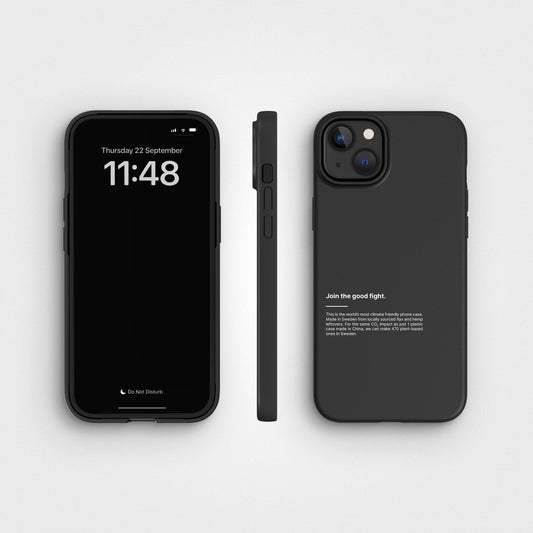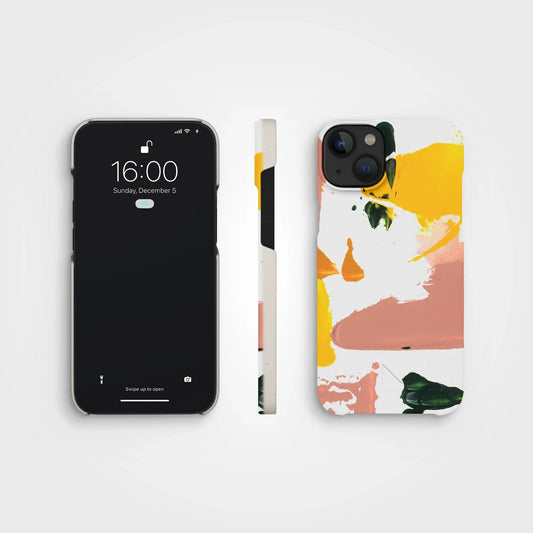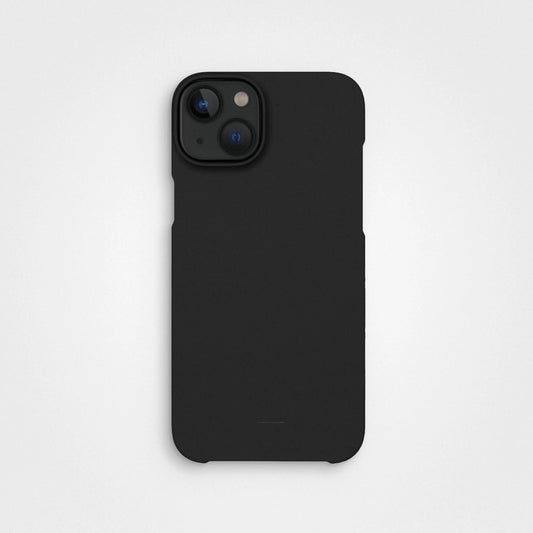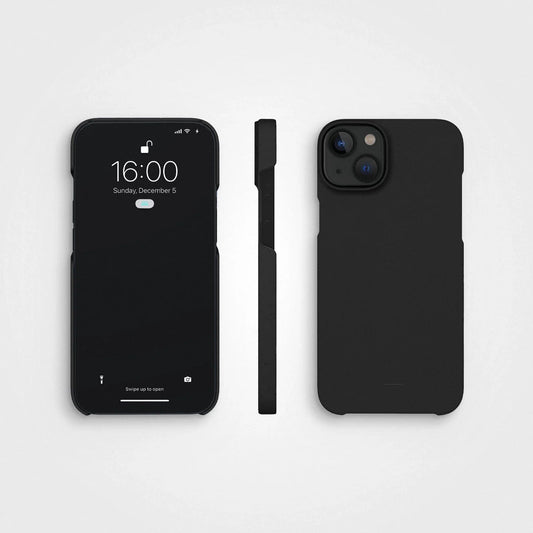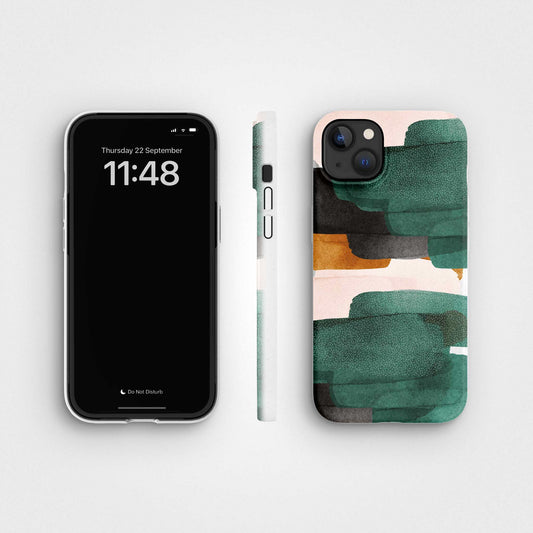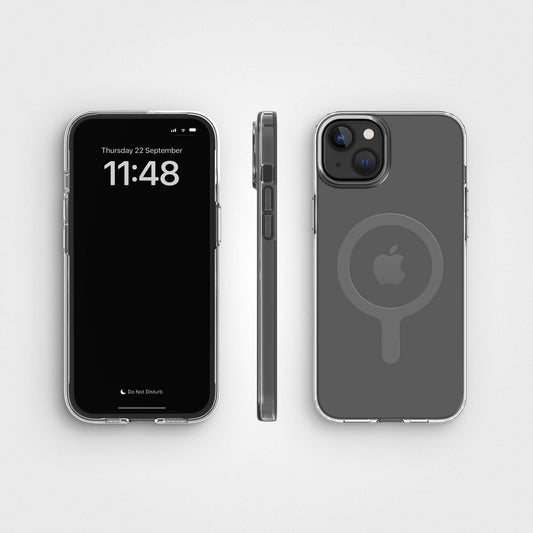Introducing: Come Join the Good Fight!
Can companies really be good? Or are they selfish, maybe even borderline evil, only interested in making a profit? Well, instead of talking about it, we decided to act.
We've engineered our whole business to do good. For good reasons. We're picking a fight with everyday stuff that's harming our planet.
Last year did we launch more radical pledges with our new format for impact reporting than ever before. At agood company, we never settle and this year makes no difference. We want to spur companies to be transparent and therefore did we launch our blueprint of Design Principles, available for every competitor to download and use.
Is your mind blown yet?
We’re also changing what companies do with the money they make, with a share of our sales supporting specific environmental causes*. Why not make some changes too? Change where your money goes. Change what materials you use. Change the direction our planet is heading. We promise, it feels pretty good.
We’re agood company Thanks for joining the good fight.
Colin Woodward
CEO
How does this work?
We want to show you how we work. Some companies may wish to hide a large part of their business away in a murky corner, whereas we are most proud of the fact that we don’t have to, in order for us to earn your trust.
The 2021 Impact Report includes a run-through of our operations, materials used, production philosophy, our contributions to communities around the globe and the concrete greenhouse gas emissions of it all.
Who are we?
agood company was founded on the principle that we can do better than others before us, and actually – pause for drumroll – be agood company.
Since we started our journey, we’ve seen 36 product drops and are now present in 41 countries. Our distributed team consists of 18 enthusiastic people located across the globe. As a global leader within our field, we continuously push the envelope for sustainable innovation.

Mission, vision & values
Our mission is to engage more people to join the good fight. We want to help people make informed and well-thought through decisions when it comes to things they buy. A big part of doing that is to offer both well-designed, sustainable products but also to share as much information as we can on how production can be carried out and why certain materials are just so darn good.
Our vision – where we’d like to see ourselves in the future – is a society of mindful consumers, supporting the planet through a conscious lifestyle.
We work everyday to get there by sticking to our core values;

We also acknowledge the fact that it is indeed easier for us to acquire, as an example, B Corp status and do a lot of good things out in the open and just for the sake of doing it, instead of using good deeds to compensate for a bunch of bad planetary karma which we know other companies struggle with, because of the way our business was founded back in 2019.
Our entire business model is based on our company values and we started this whole journey with societal and environmental sustainability in mind. So it sure is a shorter stretch for us to cover than for other companies that have to uproot their entire thoroughly unsustainable business model in order to “go green” as they’d probably put it.
But – that doesn’t stop us from continuously trying to improve our way of working and our impact on the planet.
Our process
We have a few go-to boxes that need to be checked before we start production of a new product. These are really questions we ask ourselves and the team at the very first product development brainstorming meeting.

If the answer to all these questions is “yes”, then we go ahead with the developing process. Rest assured that the answer is not always “yes” to all of them. Sometimes we think we can make a good product out of a less harmful material but are ultimately proved wrong – just take a look at these failed products that we put on the back-burner for now.
Our materials
Our products are designed to be either biodegradable, recyclable or completely circular. We invented and launched our Design Principles as a blueprint, which can be found here.
What makes resources sustainable can change with time and technology. Let’s also face the fact that we have imperfect knowledge; we learn by doing. What one generation thought was an inexhaustible resource can become scarce for the next.
Just because something is natural doesn’t mean using it to create products is sustainable. Sustainable living/design/products require conscious thought and reassessment of action and reaction; the effects on local and global stakeholders. We’ve gathered all of our materials used here, including the rationale behind using them.

Our production
When we set out to find partners to help us create these jaw-dropping products that we’ve dreamed up (like electric toothbrush heads made from bamboo!?), we look at a couple of very specific things.
-
Location – we like to keep production close to where the raw material is sourced to reduce the greenhouse gas emissions from shipping the material to the factory.
-
Working conditions & ownership – Are the people working with producing our products paid a living wage and do they have the right to join a union? Is the operations family owned or operated on a gender-equal basis? We’d like to see all of these questions answered with a resounding “yes”.
-
Quality & trust – Making sure we can work together in a good way to guarantee top-notch quality.
-
Environmental awareness & flexibility – Most of our partners already had great waste-water treatments in place and used renewable energy, but for some we have had to encourage them to branch out and replace old energy sources with renewable ones.
During 2021 we had 23 suppliers in 8 countries and all of them have signed our Supplier Code of Conduct. With all of them are we also working with a improvement programme.

Greenhouse gas footprint
We have used the GHG (greenhouse gas) Protocol Corporate Accounting and Reporting Standard which provides requirements and guidance for companies like ours to make a GHG emissions inventory.
As a disclaimer, we should point out that our report has not been vetted by a 3rd party and our analysis has been conducted based on the data points provided to us by our suppliers.
While the 2020 provided us with a baseline of how big our greenhouse gas emissions footprint is and give us some insight into how we can work to further reduce it, 2021 is all about that.
The GHG Protocol looks at three different scopes where a company can review its emissions; Scope 1, 2 and 3.

The first scope reviews all direct emissions from the activities of the company or from an organization under their control, including:
- Stationary combustion: Anything in which we ourselves burn fuel = factories we own or control
- Mobile combustion: Fuel burnt in transportation, meaning company cars if any. This does not include shipping of raw materials or products.
- Process emissions: Physical or chemical processes that we do such as melting down, moulding in factories that we ourselves own
- Fugitive emissions: Any leaks we might have of greenhouse gasses such as cooling towers, air conditioning or similar.
As we didn’t own or have control over any factories during 2020, nor did we have any company cars, the review of this first scope will leave our emission footprint at a solid zero!
*CO2 refers to Carbon Dioxide, while CO2 e stands for “Carbon Dioxide Equivalent” which includes CO2 and other greenhouse gases

The second scope reviews indirect emissions from purchased energy, like electricity, steam, heat or cooling. To put into context, this is essentially anything we purchase from the grid, for offices and factories. Because we didn’t actually rent any office space or own any factories in 2020, none of this would be applicable on agood company, so another solid zero.
The third and final scope reviews all other indirect emissions from our activities, occurring from sources that we do not own or control. These are usually the biggest share of emission posts for companies such as ours and we are no exception. The footprint reviewed in this scope includes emissions associated with business travel, procurement, indirect waste and water.
Business travel
In 2021, we made seven business trips. One to France in September from Sweden, one Stockholm - Hamburg and five London - Stockholm. All unfortunately via air. We offset them with 100%, but it's not good enough. We are pushing the envelope for the Swedish train company, SJ to open more line hauls down to Europe. When and if it happens, we will use them as the prefered travelling method.
Suppliers’ footprint
All of our production is carried out by our suppliers who account for the majority of our Scope 3 emissions. They too take steps to minimize their impact. They were carefully selected after an evaluation of wastewater treatment, energy sources, and employee satisfaction.
Our suppliers were asked to provide emissions data for the entire facility, after which we calculated the ratio of the amount of goods manufactured for us to the total amount of goods manufactured in the factory. This provided us with a ratio to calculate the amount of resources consumed for agood company specifically. The sum across the purchased goods and services is then multiplied by the ratio calculated earlier.
Sources for emissions factors in 2021 report are:
- https://www.researchgate.net/publication/340075042_Quantification_of_Greenhouse_Gas_Emissions_from_Wood-Plastic_Recycled_Composite_WPRC_and_Verification_of_the_Effect_of_Reducing_Emissions_through_Multiple_Recycling
- http://www.epd.or.kr/eng/lci/lciCo200.do
- https://www.carbonfootprint.com/factors.aspx
- https://link.springer.com/article/10.1007/s11367-020-01853-2/tables/3
- https://www.sciencedirect.com/science/article/pii/S0921344915301245
Upstream & downstream transportation
One large factor for any online retailer will always be transportation, or in other words; shipping. We differentiate between upstream (any transport related to the actual production of our awesome products) and downstream transportation and distribution (getting the products to all of our customers). Because we ship globally, we work with a number of transport carriers and always make sure that they have two things:
- Transparent reporting
- Offset carbon emissions related to the transportation of our products
Our customer’s footprint & the products’ after-life
We offset all emissions from production, all shipments from the factories to our distribution centers and from our distribution centers to our customers.
We also make sure to use stone paper as our packaging material, an environmentally friendlier alternative to tree-based or fossil fuel packaging. The other main material is bamboo pulp.
Lastly, we only create recyclable or completely circular products which do not, if disposed properly of course, contribute to the mountains of waste that are put into landfills or discarded into nature every year.

We're carbon neutral!
CO2 refers to Carbon Dioxide. The extra "e" in CO2e, which is the measurements we have included in the GHG Report, stands for Carbon Dioxide Equivalent and includes CO2 and other greenhouse gases.
Our grand total of greenhouse gas emissions during 2021 is 155 t CO2e. This means that we have contributed to emitting just about over 155 tonnes of greenhouse gases. To put this into perspective, that is the equivalent of about 79 passenger vehicles driven for one year.
As we mentioned before, we always start out by minimizing our emissions before we even begin to think about compensating for them. We did this in 2020 where our calculations told us we emitted 105 tonnes of CO2, while compensating for this by offsetting 630 tonnes of CO2.
For our operational year 2021, where we are now calculating all greenhouse gases emitted, and not just CO2, we have emitted 155 t CO2e and offset more than in 2020; 100 tonnes of CO2e.
How we offset greenhouse gas emissions:
- We offset all business travel - either via airlines programme or by planting trees
- We offset all CO2e emissions from production
- We offset all shipments from the factories to our distribution center
- We offset all shipments from our distribution center to our customers via our transporters programmes
- We plant trees within the framework of our A Good Foundation Zambia Tree Project

Our global community efforts
Early 2020 we launched our own agood foundation, through which we support environmental and societal sustainability efforts across the globe. We are able to do this by donating 4% of all net sales to the foundation, and we’re extremely proud of our efforts so far!
The above-mentioned Zambia Tree Project is based out of the Luanshya district of the Zambian Copperbelt. Our partner, WeForest, works with hundreds of small-scale farmers. Providing them with training and tools to diversify their sources of income while they plant and protect local forests.
During 2022 is the Foundation set for a complete re-launch, with a more clear connection between every product and a specific NGO-Partner
Through agood foundation, and through the support of our community of customers, we also support the Humanium Metal Project in El Salvador, which collects illegal firearms in violence-ridden communities and melt them down into the "new" substance; Humanium. We've partnered with Humanium Metal to create the Humanium Metal Pen, where 25% of the sales go to supporting the communities from where the firearms were seized, as well as towards lobbying efforts on an international scale demanding gun-safety.
You can read more about all the agood foundation initiatives here.


Certifications & badges of honour
Way back in 2019 when we launched, we immediately decided that we wanted to become a B Corp-certified company. We are VERY proud to say that we managed to become certified already in our first year and even improved our certification ranking in 2021. We are now preparing for 2022 reassessment.
International certifications like B Corp help consumers navigate the rough seas of companies claiming to be great and green. That’s why we feel it’s important to work within the standards of some of the most well-known certifications there are; ISO 14001, ISO 9001, Cradle to cradle, The Vegan Society, FSC and more. You can read all about them here.
Global goals of making the world a better place
In 2015, the United Nations developed a shared blueprint for creating peace and prosperity for both people and the planet. This took the form of 17 interconnected sustainable development goals, to be implemented over the following 15 years.
It’s our hope that through our work, and the work of our partners, we can do our bit. However, we’re a new company with big dreams and as of yet lack the same level of resources and influence as established multi-million corporations.
So, we thought we’d focus on a couple of the goals that are closest to our heart:
SDG 12: Ensure sustainable consumption and production patterns

If you remember our mission – to transform mindless consumption into conscious decisions – you’ll likely understand why this sustainable development goal is so important to us. We pride ourselves in offering more sustainable alternatives to people, so that they can make a change for the better in their everyday lives.
This is our North Star and the basis of all our processes and decision making.
SDG 13: Take urgent action to combat climate change and its impacts

We think that industry, as the third-biggest greenhouse gas emitter, should play an important part in taking urgent climate action.
As a carbon neutral company, we reduce all the carbon emissions from our operations and then offset what we do emit through carbon offset programmes.
Never stop improving!
Hard facts. We need to do more and better.
We pledge the following for 2022:- Implement our agood foundation
- Reduce our original GHG emissions from 2021 to 2022
- Continue our mission to civilise the online retail industry when it comes to the horrifyingly unsustainable practice of free returns
- Improve all factories on at least one new area
- Further work with equal opportunity within our own operation as well as that of our partners’
Sources for emissions factors in the 2021 Impact Report are:
- https://www.researchgate.net/publication/340075042_Quantification_of_Greenhouse_Gas_Emissions_from_Wood-Plastic_Recycled_Composite_WPRC_and_Verification_of_the_Effect_of_Reducing_Emissions_through_Multiple_Recycling
- http://www.epd.or.kr/eng/lci/lciCo200.do
- https://www.carbonfootprint.com/factors.aspx
- https://link.springer.com/article/10.1007/s11367-020-01853-2/tables/3
- https://www.sciencedirect.com/science/article/pii/S0921344915301245


